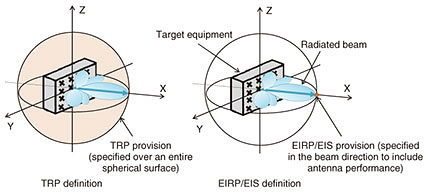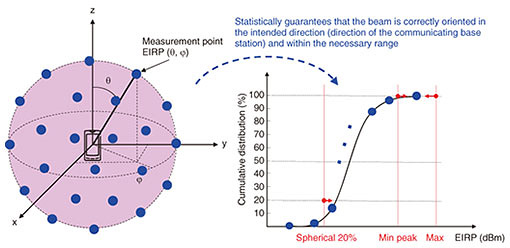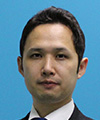 |
|||||||||||||||||||||||||||||||||||||||||||||||||||||||||
|
|
|||||||||||||||||||||||||||||||||||||||||||||||||||||||||
|
Feature Articles: NTT DOCOMO 5G Initiatives for Solving Social Problems and Achieving Social Transformation Vol. 18, No. 12, pp. 78–85, Dec. 2020. https://doi.org/10.53829/ntr202012fa12 NTT DOCOMO Contributions to 5G StandardizationAbstractAt the 3rd Generation Partnership Project (3GPP), the initial version of the fifth-generation mobile communications systems (5G) standard was completed in June 2018, and at the Open Radio Access Network (O-RAN) Alliance, specifications for achieving a 5G open radio access network were released in March 2019. NTT DOCOMO is an active contributor to standardization efforts at 3GPP and O-RAN and the commercial 5G service that it launched in March 2020 conforms to 3GPP and O-RAN specifications. This article provides an overview of NTT DOCOMO’s contributions to the formulation of these specifications. Keywords: 3GPP, 5G standard, O-RAN 1. IntroductionAt the 3rd Generation Partnership Project (3GPP) Technical Specification Group (TSG) #84 plenary meeting held in June 2018, 3GPP Release 15 specifications were declared frozen marking the completion of the initial fifth-generation mobile communications systems (5G) standard. The 5G standard is a new radio access specification called New Radio (NR). It features a new core network*1 called the 5G core network (5GC) and includes functions for linking with the existing Long Term Evolution (LTE)/Evolved Packet Core (EPC)2* system. At 3GPP, 5G standardization envisioned the following three usage scenarios based on the ITU-RM.2083 vision recommendation issued by the International Telecommunication Union - Radio Communication Sector (ITU-R) in September 2015: (i) enhanced mobile broadband (eMBB), (ii) massive machine type communications (mMTC), and (iii) ultra-reliable and low-latency communications (URLLC). Studies for Release 14 commenced in March 2016 with a study item (SI) established on requirements and elemental technologies. This was followed by studies for Release 15 from March 2017 with a work item (WI) established on detailed specifications. NTT DOCOMO proactively contributed to the formulation of 5G specifications at 3GPP over the two-year, three-month period from the beginning of Release 14 to the completion of Release 15. This contribution included technical proposals, compilation of specifications, and Chairman and Vice Chairman roles at meetings. During this time, the number of contributions to 5G specifications submitted by NTT DOCOMO came to approximately 3700 items, which ranked ninth among worldwide companies and first as a mobile operator [1]. NTT DOCOMO was also evaluated as first among mobile operators in terms of the number of 5G candidate essential-patent applications [2]. In parallel with these 3GPP standardization activities, NTT DOCOMO established the Open Radio Access Network (O-RAN) Alliance with AT&T, China Mobile, Deutsche Telekom, and Orange in February 2018. Aiming to construct a highly extendible, open, and intelligent next-generation radio access network*3 as typified by 5G, the O-RAN Alliance has been working to (i) promote open interfaces with high interoperability, (ii) apply virtualization and white box*4 schemes to radio network equipment, and (iii) leverage artificial intelligence (AI) and big data. As a result of these efforts, 3GPP Release 15 specifications were completed in June 2018 and O-RAN fronthaul*5 specifications were completed in March 2019 thereby opening the door to development for 5G commercial services. This article describes the activities involved in the formulation of 5G specifications and NTT DOCOMO’s contributions to this effort.
2. Activities toward early formulation of 5G specifications at 3GPP and contributionsIn the formulation of 5G specifications at 3GPP, studies on NR, the new radio access system, proceeded with the aim of standardizing specifications targeting use cases for achieving parts of eMBB and URLLC in Release 15 and standardizing remaining specifications including URLLC and mMTC in the next stage consisting of Release 16 and beyond. Here, it was decided to formulate specifications in a systematic manner through stepwise standardization of 5G that encompasses a wide array of requirements and use cases. For example, standardization activities would first tackle specifications for the case of combining and operating 4G base stations and the 4G core network with 5G base stations in a scheme called “non-standalone” operation and then take up all specifications in the next stage including “standalone” operation that enables operation with only 5G base stations and the 5G core network. NTT DOCOMO made major contributions not only to promoting 5G standardization overall but also to early formulation of 5G specifications. Specifically, while guaranteeing the standardization of non-standalone operation and standalone operation in the same release (Release 15) by June 2018 as originally scheduled, NTT DOCOMO and 47 other companies jointly submitted to 3GPP a document stating that specifications for non-standalone operation would be completed by December 2017 thereby contributing to early formulation. This early completion of specifications helped to accelerate the worldwide deployment of commercial 5G. 3. Activities and contributions in 3GPP TSG Service and System Aspects/Core Network and TerminalsAt 3GPP, TSGs carry out technical studies under the Project Coordination Group that oversees all projects. These TSGs consist of three groups: TSG Service and System Aspects (SA), TSG Core Network and Terminals (CT), and TSG Radio Access Network (RAN). The first of these, TSG SA, studies use cases and derives system requirements, decides on architecture and derives requirements for individual functions, and decides on the flow of information between functional units and the operation of individual functions. It also prescribes specifications for each of the above items. TSG CT, meanwhile, prescribes protocols between terminals and the core network and between functional units within the core network plus detailed specifications for an external application programming interface (API) for third-party users and for a universal subscriber identity module (USIM)*6. Among its work in prescribing 5G specifications, NTT DOCOMO has held Vice Chairman posts in TSG CT and SA Working Group 3 (SA-WG3) and has contributed greatly to establishing overall policies on prescribing specifications, drawing up schedules, and promoting technical studies. In prescribing 5G specifications, TSG SA/CT expanded functions for accommodating NR as a non-standalone system in EPC and studied 5GC as new core-network specifications. Thinking that a suitable amount of time would be needed to expand the 5G coverage area, NTT DOCOMO emphasized the launching of 5G services in a non-standalone system within SI studies for Release 14. However, at the beginning of these studies, it was the opinion of both vendors and mobile communications operators that studies on a new core network should be unified, so no approval for our proposal could be obtained. However, thanks to repeated explanations and progress in TSG RAN technical studies (described below), approval was gradually obtained, and later, priority was placed on drafting specifications for a non-standalone system as 5G at the RAN/SA #72 plenary meeting. Despite this drawn-out chain of events, many operators around the world have since adopted this non-standalone system as the main network configuration in the initial period of 5G deployment. In addition, specifications for a new core-network concept were established as 5GC for application to the 5G service rollout period. NTT DOCOMO contributed to advancing specifications for both accommodating NR in EPC (non-standalone system) and for 5GC. 3.1 SA-WG1SA-WG1, whose responsibilities are to study use cases and derive system requirements, studied only 5GC without relation to the non-standalone system. Here, NTT DOCOMO hypothesized that customer needs and desires would be varied with a long-tail*7 distribution that would require not a uniform network but rather a divided network (the network slice*8 concept), which it promoted. NTT DOCOMO also took up issues fundamental to operators and took the lead, in particular, in drawing up specifications for access control. 3.2 SA-WG2SA-WG2 is responsible for determining architecture, deriving requirements for each functional unit, and deciding the flow of information between functional units and the operation of individual functions. This WG studied both the non-standalone system and 5GC. Some European communications operators treated the non-standalone system as part of the flow toward higher LTE radio speeds. With this being the case, policies were established on operating this system without any changes to the core network so that many operators could deploy it and on inserting functions enabling advanced control for operators willing to make changes to the core network. Additionally, for individual technical items, policies were established on studies regarding encryption and serving gateway (S-GW)*9 selection in SA-WG3 and CT-WG described below. In 5GC, several companies declared their candidacy for the position of Rapporteur thereby delaying the drafting of the work item description (WID), but NTT DOCOMO took on the role of Editor at the request of WG members and got the WID completed. After that, NTT DOCOMO also contributed to studies on network slicing and EPC-5GC interoperability. 3.3 SA-WG3SA-WG3 has the responsibility of making comprehensive studies on security issues from use cases to protocol. In this WG, studies were made on both of the systems described above. NTT DOCOMO served as Vice Chairman and led technical studies. In the non-standalone system, it was decided that security applied to the secondary radio access technology (Secondary RAT)*10 radio interval would operate by reading LTE security capabilities into NR security capabilities without having to make changes to the mobility management entity (MME)*11. NTT DOCOMO led the drafting of specifications for this scheme. In 5GC studies, NTT DOCOMO served as Rapporteur of main specifications documents for 5GC overall and led improvements to encryption and authentication in the radio portion. 3.4 CT-WG1CT-WG1 is responsible for specifying protocol in detail between terminals and the core network and of studying certain basic functions in terms of architecture. In relation to 5GC, NTT DOCOMO promoted the drafting of specifications for the Earthquake and Tsunami Warning System, Steering of Roaming, and access control. 3.5 CT-WG4CT-WG4 is responsible for specifying protocol in detail between functional units within the core network. In the non-standalone system, NTT DOCOMO promoted the drafting of specifications for a system to select an appropriate S-GW for accommodating high traffic.
4. Activities and contributions in 3GPP TSG RANTSG RAN is responsible for the formulation of all specifications describing the radio access network. NTT DOCOMO led technical discussions in the WGs under TSG RAN and contributed greatly to the formulation of 5G RAN specifications by serving as TSG RAN Vice Chairman. 4.1 RAN-WG1RAN-WG1, which carries out studies in relation to the radio interface on the physical layer, studied, in particular, radio access systems and multiple transmit/receive antenna technologies. For example, in NR, it defined orthogonal frequency division multiplexing (OFDM)*12 based on multiple subcarrier*13 intervals with the aim of supporting a variety of use cases and a wide frequency band from low-frequency bands used in existing cellular systems to high-frequency bands including the millimeter-wave frequency band. Here, NTT DOCOMO made a number of technical proposals for band-expansion technology, antenna technology, and initial-stage access technology and made significant contributions to completing specifications by coordinating progress management and concerned individuals as Rapporteur for formulating 5G specifications, serving as RAN-WG1 Chairman, and taking leadership roles in various elemental technologies. 4.2 RAN-WG2RAN-WG2, which has the responsibility of studying radio interface architecture and protocol, drafted a specification to enable NR communications to be carried on top of existing LTE communications through Dual Connectivity*14 between LTE and NR. This specification is based on the specification for LTE Dual Connectivity that was promoted by NTT DOCOMO as Rapporteur and standardized in Release 12. It enables high speeds and low latency by NR while making use of the existing LTE network by adopting a split bearer*15 [3] that terminates at a secondary node (SN)*16 proposed by NTT DOCOMO for 5G. NTT DOCOMO made significant contributions to completing specifications in RAN-WG2 to achieve diverse use cases and meet requirements for 5G. For example, given that functions and capabilities reported by a terminal to a base station and parameters set in a terminal by the base station can result in an enormous amount of data, NTT DOCOMO led studies on Radio Resource Control messages for transferring such data. 4.3 RAN-WG3RAN-WG3 is responsible for studying RAN architecture and interfaces. This WG extended the X2 interface between eNB base stations and enabled eNB–gNB linkage to achieve Dual Connectivity between LTE and NR. Additionally, to enhance the flexibility of RAN rollout with improved performance and cost efficiency in mind, RAN-WG3 specified a F1 interface to enable a base station to be split into a central unit (CU), which terminates the Packet Data Convergence Protocol sublayer and above, and distributed unit, which terminates the Radio Link Control sublayer and below. It also specified an E1 interface to enable CU to be split into a CU-control plane, which terminates the control plane*17, and CU-user data plane, which terminates the user plane*18 [3]. Here, to enhance multi-vendor interoperability in these interfaces, NTT DOCOMO submitted many technical contributions by leveraging its experience in achieving multi-vendor capabilities in the commercial LTE network. It also contributed by serving as Moderator to encourage discussions in this area and as Editor of specifications. 4.4 RAN-WG4RAN-WG4 bears the responsibility of formulating specifications for base-station and terminal radio frequency (RF) performance and radio resource management. In addition to frequency bands below 6 GHz as used in LTE/LTE-Advanced, this WG studied the use of sub-millimeter wave*19 and millimeter wave*20 frequency bands introduced for NR (defined in Release 15 as Frequency Range 2 (FR2): 24,250–52,600 MHz frequency band). Serving a four-year term as Vice Chairman of RAN-WG4 from 2015, NTT DOCOMO actively submitted technical proposals and promoted discussions toward the formulation of frequency bands taking the 5G frequency allocation plan in Japan into account and toward the drafting of RF performance specifications for base stations, terminals, etc. The legal system surrounding 5G in Japan advanced in step with these specifications. The use of FR2 heralds the coming of wide-band communications, but it is not without its problems from the viewpoint of configuring a RF section. Specifically, it means an increase in power loss and signal propagation loss in the RF section due to high frequencies and a contraction of area coverage brought on by a drop in power density due to wideband communications. To solve these problems, coverage must be ensured by achieving high antenna gain through an antenna array formation. However, it is difficult to implement a radio-signal transceiver and antennas at high density in a small space, so for FR2, a conventional RF configuration with connectors for measurement use cannot be applied. For this reason, an over the air (OTA)*21 provision was introduced in the FR2 RF specification to enable testing of the RF configuration without connectors. As shown in Fig. 1, the OTA provision defines total radiated power (TRP) emitted from the equipment targeted for measurement as well as equivalent isotropic radiated power (EIRP)*22 and equivalent isotropic sensitivity (EIS)*23 in the beam direction that includes antenna characteristics.
Focusing on EIRP maximum transmission power in FR2 for a terminal, the adopted provision uses a cumulative distribution of each EIRP value obtained when manipulating the beam direction over an entire spherical surface centered about the terminal (Fig. 2). The purpose of introducing this provision was to statistically guarantee that the beam is correctly oriented in the intended direction (the direction of the base station performing communications) and within the necessary range. The value that must be minimally satisfied by at least one of the measured EIRP values is defined as the Min peak value and the value at X% of the cumulative distribution, that is, the value for which the (100–X)% area in spherical surface space must be guaranteed, is defined as spherical coverage. Thinking that spherical coverage would be essential to ensuring FR2 area performance as an operator, NTT DOCOMO expanded discussions while gaining the approval of various operators that spherical coverage would preferentially become a high-performance provision among various types of provisions with technical feasibility considered.
5. Activities and contributions in O-RANNTT DOCOMO joined up with AT&T, China Mobile, Deutsche Telekom, and Orange in February 2018 to launch the O-RAN Alliance with the aim of constructing a highly extendible, open, and intelligent RAN for the 5G era. Today, many operators and vendors are participating as members (about 200 subscribed members as of June 26, 2020) and a wide range of studies are being conducted in WGs in such areas as open interfaces to enable interoperability in RAN, virtualization, use of AI and big data, white box hardware, and open source software. Many specifications have already been released. As a result of these activities, the O-RAN Alliance has been attracting attention and generating many expectations. Among these activities, many operators and vendors have announced their intention to adopt O-RAN open fronthaul specifications released in March 2019 to facilitate multi-vendor interoperability in the fronthaul interface between the digital processing section (centrally located) and radio section (remotely located) of a base station that up to now has been vendor-specific on a global basis [4]. This declaration is expected to have a major impact on the industry and is attracting much attention as a result. In actuality, NTT DOCOMO had already achieved an original multi-vendor RAN since the time of the LTE generation using a common fronthaul interface in cooperation with partner vendors. Making use of the know-how gained there, NTT DOCOMO served as SI Rapporteur for base-station functional split carried out for 3GPP Release 14/15 from March 2016 to December 2017. NTT DOCOMO also participated in the xRAN Forum from February 2018 prior to its integration with the O-RAN Alliance and promoted the drafting of fronthaul specifications there in cooperation with approving operators and vendors. Now, as well, NTT DOCOMO is actively promoting fronthaul standardization such as by serving as a co-chair of WG4 that manages open fronthaul specifications. In addition, NTT DOCOMO has achieved multi-vendor interoperability using O-RAN open fronthaul specifications in a commercial 5G network as the world’s first, and going forward, it seeks to achieve a global ecosystem of multi-vendor RAN in 5G. Multi-vendor interoperability in RAN expands the portfolio of base-station solutions that can be used and enables quick, flexible, and cost-efficient network construction. These features will become all the more important in 5G having many and varied requirements. At the O-RAN Alliance, NTT DOCOMO has also served as a co-chair of WG5 that studies the conversion of 3GPP interfaces such as X2 and F1 to open interfaces and contributed to the release of profile*24 specifications to ensure multi-vendor interoperability in those interfaces. From here on, NTT DOCOMO also plans to promote other O-RAN Alliance studies in such areas as virtualization and the use of AI and big data.
6. ConclusionThis article described activities and NTT DOCOMO contributions at 3GPP and the ORAN Alliance toward 5G standardization. Today, at 3GPP, specifications for Release 16 toward advanced 5G have been completed and technical studies for Release 17 that aim to specify more usage scenarios are progressing. Meanwhile, at the O-RAN Alliance, in addition to further studies on open interfaces, technical studies on the virtualization of the radio network and use of big data are moving forward. At NTT DOCOMO, we view 5G as the technical foundation for wireless communications over the next 20 years. To achieve further advances, we will continue making proactive contributions to standardization activities at 3GPP and the O-RAN Alliance. This article is the reproduction of the special article published in NTT DOCOMO Technical Journal (Vol. 22, No. 2, Oct. 2020). References
Trademark notesAll company names or names of products, software, and services appearing in this article are trademarks or registered trademarks of their respective owners. |
|||||||||||||||||||||||||||||||||||||||||||||||||||||||||







